
Holocaust Gallery Walk Program
Viewbank College
Despite everything, I believe that people are really good at heart.
Anne Frank


Holocaust Gallery Walk Program
Viewbank College
Despite everything, I believe that people are really good at heart.
Anne Frank
The English and Humanities teams at Viewbank College collaborated to develop an interdisciplinary program for the Year 9 students, designed to deepen their understanding of the Holocaust.
This cross-curricular initiative engaged students in an integrated unit where they explored the theme of ‘The One’. Working in small groups, students delved into the individual stories of survival, hope and resilience experienced by those who lived through the Holocaust.

The idea of a Gallery Walk came about as a way to combine history with art, personal response, and public engagement, encouraging students to interact with historical events in a way that fosters both personal understanding and community awareness.
Hannah. A Zach. A Mete. A Eunice. A Claudia. A Virgini. A Max. A Chrissy. A Amy. A Stephanie. A Riley. A Jack. B Tamika. B Hamish. B Mason. B Vibhor. B Will. B Ekeesha. B Sion. B Will. B Renee. B Billy. B Sabine. B Emme. B Cat. B Isabella. B Angel. B Phoebe, B Heidi. B Connor. B Xavier. B Alannah. C
Josh. C Liam. C Leila. C Dante. C Ava. C Danny. C Leo. C Lucas. C Karla. C Tiglath. C Faith. C Derek. C Cooper. C Aspen. C Ellio. C Blaise. C Kai. C Lily. C Lachlan. D Jenny. D Grace. D Olivia. D Freddy. D Marcus. D Elisa. D Noah. D Byron. D Felix. D Dhihana. D Rebecca. D Lachie. D Amelia. E
Immy. E Finn. E Luca. F Katherine. F Ryan. F Lavinia. F Fanita. F Emmy. F Ashley. G Kiarra. G Zoey. G Eli. G Daniel. G Tom. G Thomas. G Georgia. G Jacob. G Will. G Avah. H Jane. H Pritha. H Ella. H Numafi. H Madeline. H Niamh. H Mason. H Ivy. H Jacob. H William. H Harry. H Christina. H Hannah. I
Holocaust Gallery Walk Program Viewbank College
Jade. I Maknoon. I Jai. I
Abishua. J Heath. J Simar. J Aryan. J Jasper. J Rianna. J Quinlan. J Emily. J Luke. J Indiana. J Ishaan. J Alex. K
Chloe. K Stephanie. K Kyle. K Madyson. K Oliver.K Acacia. K Ewan.K Milena. K Adam. L Edward. L Declan. L Cheng. L Jun. L Jack. L Alice. L Jacinta. L Max. L
Eugene. L Naomi. L Lilah. L Maple. L Amy. L William. L Rolfe. L Madison. L Liam. L Annabella. L Div. M Adam. M Miriam. M Ajay. M Kevin. M Troy. M Emi. M Connor. M Darcy. M Ewan. M Jesse. M Ryder. M Pat. M Aryan. M Cameron. M Alexa. M Ethan. N Eloise. N Izzy. N Michael. N Edwin. P Evie. P
Damon. P Max. P Christopher. P James. P Rose. P Maya. P Edwin. P Massih. P An. P Jake. P Phoenix. P Lucas. P Robert. P Samual. P Alex. P Anthony. Q Daniel. R Ethan. R Zara. R Emily. R Lenni. R Eleanor. R Kleio. R Lana. R Cooper. R Lily. R Shriya. S Umar. S Sophia. S Adonis. S Cecilia. S
Lucy. S Daniesha. S Joshua. S Soroush. S Devlin. S Ella. S Jessica. S Ben. S Krish. S Gabby. S Oliver. S Jacinta. S Milli. S Luca. S Vivienne. S Caiden. S Tahlia. S Rhianna. S Elliot. S Luka. S Manu. S Bohdan. S Brianna. S Sarvesh. S Molly. S Oscar. S Sid. T Lexie. T Matilda. T Jadon. T Logan. T Sebastian. V Dhruv. V Pavle. V Kyan. W Sofia. W Sophie. W Huw. W Sash. W Rick. W Luke. W Rohan. W Emma. W Matthew. W Freya. W Zoe. W Ashlee. W Bronte. X Robin. X Leon. X Lexie. Y Charlie. Y Jiesen. Y Paul. Y Audrey. Y Shouyi. Z Flynn. Z
‘It made me think about the experiences of the people that went through the horrors of the Holocaust. It taught me the true scale of how bad it was and just how important it is to prevent events like that happening in the future.’ Edward L
The Melbourne Holocaust Museum (MHM) runs a range of groundbreaking education programs that use storytelling, testimony and connection to inspire change, to teach participants to think critically and to practise empathy.
Delivered by expert Holocaust educators, to over 27,000 students in 2024, our education programs combine essential knowledge with character strengths to spark greater understanding and acceptance of difference, so together, we can inspire a better future.
Year 9 students from Viewbank College visited the MHM to learn about the Holocaust and hear Melbourne survivors speak about their stories of survival and hope. Two teachers from Viewbank College then participated in the intensive 18-day Gandel Holocaust Studies Program for Australian Educators at Yad Vashem in Jerusalem, Israel. The educators at Yad Vashem provide these educators with the opportunity to deepen their own understanding of the Holocaust and gain crucial insights into how to teach about the Holocaust in a way that fosters empathy, humanity and critical thinking.
Inspired by the theme of ‘The One,’ Viewbank College designed an integrated unit where students worked in small groups
Holocaust Gallery Walk Program Viewbank College
to explore personal stories of survival, hope, and resilience from the Holocaust. Their research culminated in a Holocaust Gallery Walk, an open evening where they proudly presented their work to teachers, parents, and the wider community.
Art has the power to bear witness and to remember. This incredible collection of student artwork is a profound testament to that truth. Inspired by their visit to the MHM, the Year 9 students at Viewbank College, under guidance of the Gandel alumni teachers, have transformed a dark chapter in history into visual expressions of memory, resilience, and hope.
Each artwork in this exhibition is a conversation with the past and a reflection of the inspiration the Viewbank College students felt from the stories they heard from the survivors. Through their creativity, these students have engaged with history as storytellers, ensuring that the lessons of the Holocaust, of understanding, empathy, and peace, remain alive in our hearts and minds.
Gandel Foundation is pleased to collaborate and support the work and message of the Melbourne Holocaust Museum (MHM), an organisation which stands as a beacon of remembrance, education, and hope, ensuring that the stories of those who suffered and perished are never forgotten.
For John Gandel AC and Pauline GandelAC, supporting the MHM over many years is about more than honouring history— it’s about safeguarding it. The Gandels’ dedication highlights a vital truth: the lessons of the Holocaust belong to everyone, and remembering the past is essential for building a just and inclusive future.
For the past 15 years, the Gandels’ have put their name to the Gandel Holocaust Studies Program for Australian Educators as they are strongly committed to helping preserve the memory of the Holocaust. To date, some 500 Australian teachers and educators have graduated from this program which is run by experienced educators at Yad Vashem in Israel.
Lisa-Marie Coghlan and Fiona Ellis, both teachers at Viewbank College participated in the Gandel Holocaust Studies Program for Australian Educators at Yad Vashem in Israel. After completing the program, they came away inspired to create a powerful, artistic experience that deeply resonated with students beyond the classroom. And so, the Viewbank Gallery Walk was created.
The Gandels’ are also passionate about the power to preserve history, evoke emotion, and inspire change. On seeing the exhibition produced by the students at Viewbank College, the Gandel’s and staff at Gandel Foundation were overwhelmed. The students at Viewbank College had turned to art and creativity as a means of expression, reflection, and tribute, which was very moving.
Gandel Foundation are committed to fostering education and the arts, and are honoured to support this book, a testament to the work and vision of those teachers and students at Viewbank College. Through this powerful project, the students have honoured the memories of those who suffered and contributed to the ongoing dialogue of humanity, resilience, and hope. The message is clear: remembrance is a shared responsibility. The support of the Gandel family and Gandel Foundation is a true and powerful testament to the belief that the Holocaust’s lessons must be a guiding force for all of humanity—because only by understanding the past can we hope to build a better tomorrow.
For more information and criteria for participating in the Gandel Holocaust Studies Program for Australian Educators, please visit https://www.yadvashem.org/education/seminars/australian-educators.html
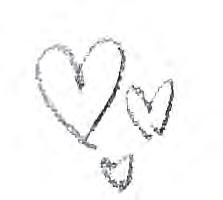

Abba Nauchowicz Kovno, Lithuania 1928 Holocaust Gallery Walk Program



The moment I saw my mother and brother heading towards the train, I realised that was it. I could say ‘goodbye’ forever. Abba Naor, April 12, 2018













In September 2013, Abram was awarded an Order of Australia (OAM) for his dedication to the Melbourne Holocaust Museum
b. October 5 1924 - Poland
Abram’s mother’s last words to him were ‘Do everything humanly possible to survive. When you do, wherever you will find yourself, tell the world what happened to your family and the other Jews.’



Holocaust Gallery Walk Program
Viewbank College P10



Helping Jews during the war was extremely dangerous.
Many brave people – friends, neighbours, employees, clergymen, and strangers – tried to help Jews, regardless of the personal consequences. Israel’s national Holocaust memorial, Yad Vashem, recognises non-Jews who risked their lives, liberty and position to save Jews. They are honoured as ‘Righteous Among the Nations’.




Holocaust Gallery Walk Program
Viewbank College
P12
This photograph is part of a collection belonging to Tamar’s cousin Kitia Altman.
Marusia Cygler with Christian woman Genia Pajak who hid her during the war. Będzin, Poland, 19 September 1944. According to Marusia, Genia had this photograph taken while Marusia was very ill with typhus, to prove if she died that it was due to illness and not betrayal.
We must always take sides. Neutrality helps the oppressor, never the victim. Silence encourages the tormentor, never the tormented.
Elie Wiesel, Holocaust survivor, author of Night
Whoever saves one life saves the world.
Sanhedrin 4:5, Mishnah, Talmud
Tamara (Marusia) Cygler (later Tamar Dror) was born on 14 March 1935 in Będzin, Poland. She was the only child of artist Samuel Cygler and his wife, dentist Rachel (nee Erlich), known as Ru.
During the first years of the war the family lived in the Będzin Ghetto. In July 1943, a Christian friend, Genowefa (Genia) Pajak, offered to hide Marusia’s 21-year-old cousin Kitia Szpigelman. At Kitia’s request she took in Marusia instead. Samuel and Ru were deported during the liquidation of the ghetto the following month. Ru is believed to have been murdered in Auschwitz and Samuel in Mauthausen.
Genia hid Marusia under the name Boguslawa (Bogusia) Pajak and obtained a fake birth certificate for her. Marusia was moved between different Pajak family members and friends to protect her throughout the war.
After the war, Marusia went to live with her maternal aunt, Dora Szwarc (nee Erlich) in Palestine, entering the country illegally in 1946. She married Amnon Dror and had two sons, Etai and Omer.
In March 1983, Genia Pajak was recognised in a ceremony at Yad Vashem as a Righteous Among the Nations. In 1993, Tamar published a memoir titled A Green Parrot. She died in October of that year.
Henrietta (Kitia) Szpigelman (later Altman) was born on 1 March 1922 in the predominantly Jewish town of Będzin, Poland, to coal merchant Mojzesz Szpigelman and his wife Zosia (nee Erlich). She had one older brother Aron (Aronek), born 1914. Kitia was educated at a Jewish high school.
Following the German invasion of Poland in September 1939, the area of Będzin where the Szpigelman family lived became a ghetto.
Kitia found work at a factory making German military uniforms. The German manager, Alfred Rossner, was initially able to protect his employees and their families from deportation on the grounds they were essential to the war effort. In the factory Kitia met Cesia Sznall who became a lifelong friend.
In 1943, Kitia’s Christian friend Genowefa (Genia) Pajak offered to hide her, but Kitia asked her to instead hide her eight-year-old cousin, Marusia Cygler (later Tamar Dror). Marusia thus survived the war.
In August 1943, the ghetto was liquidated. Kitia’s parents were sent to Annaberg Labour Camp in Germany. In December, Rossner was arrested by the Gestapo and hanged for protecting Jews.
In June 1944, Kitia and Cesia were transported to Annaberg. They were then moved to Auschwitz, Ravensbrück Concentration Camp and finally Beendorf Concentration Camp.
In April 1945 they were liberated by the International Red Cross and taken to Sweden. Kitia was taken in by a family and remained there until 1946 when she travelled to Paris.
Aronek had moved to Paris to study veterinary science in 1932 and remained in hiding in France throughout the war. Mojzesz had died on a death march from Blechhammer camp in early February 1945. Zosia survived the war and she, Aronek and Kitia were reunited in Paris. In Paris Kitia met Misha Zablud. They married in 1947 and migrated to Melbourne, Australia. Their son, Eugene (Yigal), was born in 1949. Following her divorce, she married Fred Altman in 1970.
Kitia was instrumental having Genia Pajak and Alfred Rossner recognised as Righteous Among the Nations. Kitia died in Melbourne on 11 November 2017.

They pointed their guns to our heads, but I survived.

They pushed us to the edge, away from the others, but I survived.
They took us away into the train, days, nights, spent hoping, praying, pleading to survive.
They marched us away, to the death camps, stripping us of our humanity, but I survived.
They cramped us into ghettos, fed us into the hands of illness and disease, but I survived.
They took others, one by one, to the gas chambers, but I survived.
I survived, I lived, but they? They did not survive.



Holocaust Gallery Walk Program
Viewbank College




Birds of Freedom is an artwork that reflects on the suffering of the Jews and other groups during the Holocaust. Alice
Li












Alone Emi McCrohan
All, all alone, In a place you call home. When life goes astray And your world starts to fray. In a world that hates, You cannot help but to think On how much you are alone.
Still I think you all should know, In times like these I have no place to go. Why must I hide in the shadow? Then it crossed my mind, That I am all alone.
Oh yes, I am alone, All alone.
Every day of your life, You may think you are alone. When times just like these seem to pull you down
Like chains, they do not burn in strife







But burn the heart, the bone, In the world and it brings everyone down. We are alone. Kiev, Ukraine

b. April 20 1926 - Racsa, Romania
In 1942 Anna’s father was sent into the Hungarian Labour Service and never seen again.
In June 1944, her mother and two of her sisters were sent to the gas chambers in Auschwitz-Birkenau the night of their arrival.





Holocaust Gallery Walk Program
Viewbank College
P18

Seelfreund Grosz
Despite the pain and suffering we had to endure, we finally made it... I dedicate my life to you all... On behalf of you all, I decided to share our stories to others, I did this to show how brave you all were. Anna





The Shabbat meal was a very special memory for Artemis. It was something she enjoyed before the Holocaust and it was a celebration of her faith, it gave her hope and optimism as well as routine and tradition.










b. December 3, 1928 - Ioannina, Greece
Holocaust Gallery Walk Program
Viewbank College
P20








August 1943 - Artemis’s father and grandfather were both arrested by the Nazis and taken to imprisonment with a group of other men in Saloniki. Her father was killed on the way and her grandfather was executed with the rest of the men.


b. May 25, 1924 - Vilna, Lithuania
After reuniting with his wife in a Paris café named Scheherezade, they opened an establishment by the same name in Melbourne.

This café became a meeting place for other Holocaust survivors.





b. May 25, 1924 - Vilna, Lithuania

Portrayed through the form of collage, the perspective of a Jewish woman is conveyed from her line of sight. Her face illustrates the emotional suffering of Jews and the physical and mental damage, hate and war can cause. Artist




Bronislava is presumed to have been in Kiev during the time of the second battle of Kiev in 1943










Holocaust Gallery Walk Program Viewbank College
do the words say and represent peace, but the symbol of the dove with an olive branch in its mouth demonstrates peace.







1943 - Hid Yavov Stein in her home, despite the enormous danger




to describe people who, for various reasons, made an effort to assist victims, including Jews, who were being exterminated by Nazi Germany during the Holocaust.


Holocaust Gallery Walk Program
Viewbank College
P26





Carlos offered a safe haven to numerous anti-fascists and Jews. He forged medical cards to justify their stay inside the clinics.
Max P. - I got to experience someone’s life who was a part of the Holocaust and get a sense of what it was like to be in that situation at that time.
Zoe W. - This project was important to me because it commemorated those who died in the Holocaust.
Noah D. - I was able to understand the horrors of the Holocaust and truly reflect on what happened.
Edward L. - It made me think about the experiences of the people that went through the horrors of the Holocaust. It taught me the true scale of how bad it was and just how important it is to prevent events like that happening in the future.
Luke J. - I learned about things that I had never heard about before and now understand the Holocaust.
Lexie T. – I enjoyed this project because it gave me the ability to learn about the history of the Holocaust and how it affected citizens both then and today.
Zoe G. - I found this topic very interesting to learn about as it is one that I haven’t focused on in class before.
Aryan M. – This project helped me increase my knowledge about the Holocaust.
Holocaust Gallery Walk Program
Viewbank College
P28
Cat B. - This project was very near and dear to my heart as a second-generation Polish refugee whose family fled conflict. My Great Grandpa and Grandma immigrated to Australia after being interned at a German forced labour camp so this topic was very significant to me. Although I had a lot of prior knowledge about the topic, I learned new and interesting things. I really valued the excursion to the synagogue and the immersive talk with the survivor was immensely powerful. I loved ‘the ONE’ project as it focussed on an individual’s story and life.
Milli S. - This unit helped me understand the meaning behind when people mentioned the word Holocaust, before this unit I didn’t really have an understanding of it.
Shriya S. - it was good to be able to come to class knowing what we were going to do, we were all focused and learned time management, organisation and group work skills. It was interesting to learn about such a significant event and the different views and perspectives, whilst being able to work collaboratively and creatively.
Acacia K. - I enjoyed this project a lot because it was different to all the other projects that we had to do. It was based on real life stories which I found very interesting. I really liked the Holocaust unit because it is a unique time in history and the stories about it and its survivors should be told for generations to come.
Christina H. - This project allowed me to learn about different life experiences from those who experienced the Holocaust and allowed me to gain a greater understanding of this historic event.



‘I was five and a half and didn’t quite understand what was happening and it was very crowded with the most difficult conditions.’







a farm outside of Siauliai. For four months the women


















The two birds trapped in the cage with no door symbolise David’s parents. His father was caught by the Nazis and his mother soon followed after trying to save him. They were sent to Auschwitz and never returned.



b. September 27, 1937 - Florence, Italy





















b. June 19, 1927 - Vienna, Austria

When WWII began, nearly half of Austria’s entire Jewish population had


Holocaust Gallery Walk Program
Viewbank College
P38




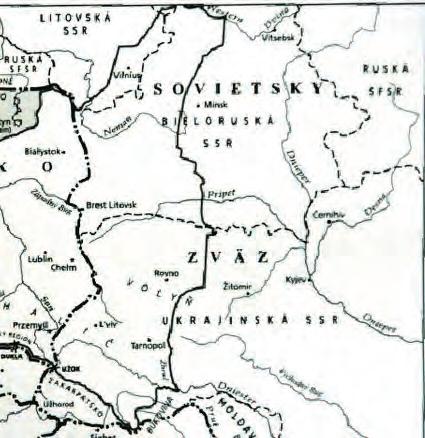


This is a drawing of a man reaching out to his burning shopfront on Kristallnacht (The Night of Broken Glass) where all the Jewish owned stores were burned.

b. May 15 1938 - Poland
Holocaust Gallery Walk Program Viewbank College




Elzbieta was given ‘Aryan’ papers to help her escape. She was then known as Barbara Stachura.






b. 1936 - Riga, Latvia









Manny, his mother Ella and uncle David escape Hungary as part of the Kasztner Transport (a rescue operation), but are diverted on a train to Bergen-Belsen concentration camp instead of Switzerland.








Bern, Germany





Holocaust Gallery Walk Program
Viewbank College
P44









b. June 12 1928 Znojmo, Czechoslovakia
Holocaust Gallery Walk Program
Viewbank College
P46






In 1943 Erika and her sister escaped from the Czernowiitz ghetto on false papers that their father had obtained through the help of a local priest
b. July 9, 1929 - Warsaw, Poland


Holocaust Gallery Walk Program
Viewbank College
P48








April 1943 - During the Warsaw ghetto uprising Estelle’s father, Samek, was part of the Jewish resistance group. Estelle, her sister and mother were hidden in an underground bunker.



Aspen C. - I loved these tasks, learning about World War 2 and the Holocaust was incredibly interesting. I found the project eye opening and fascinating, and I became a little obsessed with it. I also think it’s just so important to be educated about the Holocaust as people tend to forget and details become obscure. We are now seeing a rise in neo Nazi ideals and antisemitic rhetoric and the problem can only be stopped through education.
Dante C. - It was really interesting to learn about someone who actually experienced this.
Heath J. – I learnt a lot about World War 2 and it reminded me of my late Grandpa who fled Lithuania during the war. It opened my eyes to the horrible things that happened. It also opened my eyes to how lucky we are.
Pritha H. - I really enjoyed this task and this one of my favourite projects I have done at school. I found it really informative to learn about all these different real-life stories.
Jade I. – We had to do a lot of research to find information on our survivor but once we did it was like peeling back the layers and discovering his life and story. This was so special, and it felt as if we were doing him justice and he is not forgotten.
Holocaust Gallery Walk Program
Viewbank College
P50
Ella S. - To me this project meant understanding the lives of each victim as a person who was lost and grieved for, and a person who had a full life before the Holocaust, and not just seeing such a horrific event as numbers and statistics.
Luke W. - This project made me reflect on the hardships that others have experienced around me. You never know what others have experienced and I think that I learnt that I should never assume.
Lenni R. - This project meant that I could be a voice for someone’s story, through the creation of the gallery it allowed the life of someone to be fully understood and shared with others.
Maya P. - The project was educational and inspiring, to conduct thorough research on a particular person was very interesting and made me thankful for the environment I live in today.
Ivy H. - This project created an opportunity to ensure these survivors are never forgotten. My group was grateful to play a part in keeping their stories alive.
Elisa D. - To be completely honest there were many struggles throughout this project, however when it all came together in the end, I felt proud of all that was accomplished and the fact that our group completed it, ultimately making me feel a sense of pride. I believe the gallery itself with all of the projects combined was truly a sight to see.
Holocaust Gallery Walk Program Viewbank




Dear Frederick R. Wohl
Although you are not here, your stories live on spreading awareness an education our generations.
I am amazed, and I’m sure many others are as well at how you managed to survive in such a horrific time. Were there individuals or acts of kindness that stood out to you?It’s very inspiring how you survived with the isolation of living life on the run. I wonder, what challenges you faced whilst in hiding, how did you maintain hope? And how has your experience influenced your perspective on life?



I want to express gratitude to you. Your courage



b. June 7, 1914 - Baden-Baden, Germany

















b. January 24, 1927 - Berlin, Germany





Holocaust Gallery Walk Program
Viewbank College
P56














One sound, one peep, one movement. It could be over.
One wrong move, one wrong turn, one wrong step. It could be over.
One wrong word, one wrong person. It could be over.

When WWII began, nearly half of Austria’s entire Jewish population had emigrated, leaving only approximately 121,000 Jews in Austria (all but 8,000 in Vienna.)
Thanks to the efforts of her brother, Romek, Genia and her father were sent to work in the Schindler factory which was connected to the Plaszow concentration camp.







Holocaust Gallery Walk Program
Viewbank College
P58 Krakow, Poland






Through this picture we can reminded of the Holocaust and the bravery that George dis- played during that time, and his resilience and intelligence that kept him alive in the concentration camps.


BMW - Claiming that he was a mechanic with BMW, George survived selection upon arrival at Auschwitz. BMW designed engines for Nazi fighter planes.

b. 1923 - Danzig-langfuhr, Poland


Holocaust Gallery Walk Program Viewbank College


b. November 5, 1924 - Bivolari, Romania







b. July 25, 1901 - Khartoum, Sudan




Helmy arranged for a certificate from the Central Islamic Institute for Anna to convert into Islam and provided her with a marriage certificate to marry an Egyptian man, Helmy Hamad.








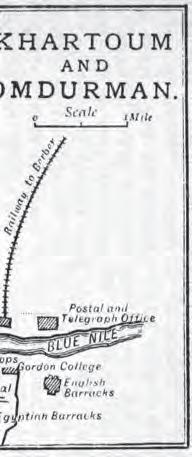









b. January 18, 1923 -Boblingen, Germany
Holocaust Gallery Walk Program
Viewbank College
P66








Kindertransport was the informal name of a series of rescue efforts between 1938 and 1940 which brought thousands of refugee children (the vast majority of the Jewish) to Great Britain from Nazi Germany.















b. October 10, 1938 - Paris, France



Holocaust Gallery Walk Program Viewbank College









Jacques and his sister Annette were placed into hiding with a Catholic family during the war and baptised as to not arouse suspicion. After the war ended they were placed into an orphanage as authorities tried to reunite the children with their family. Eventually they were adopted by the Feins and they moved to America.






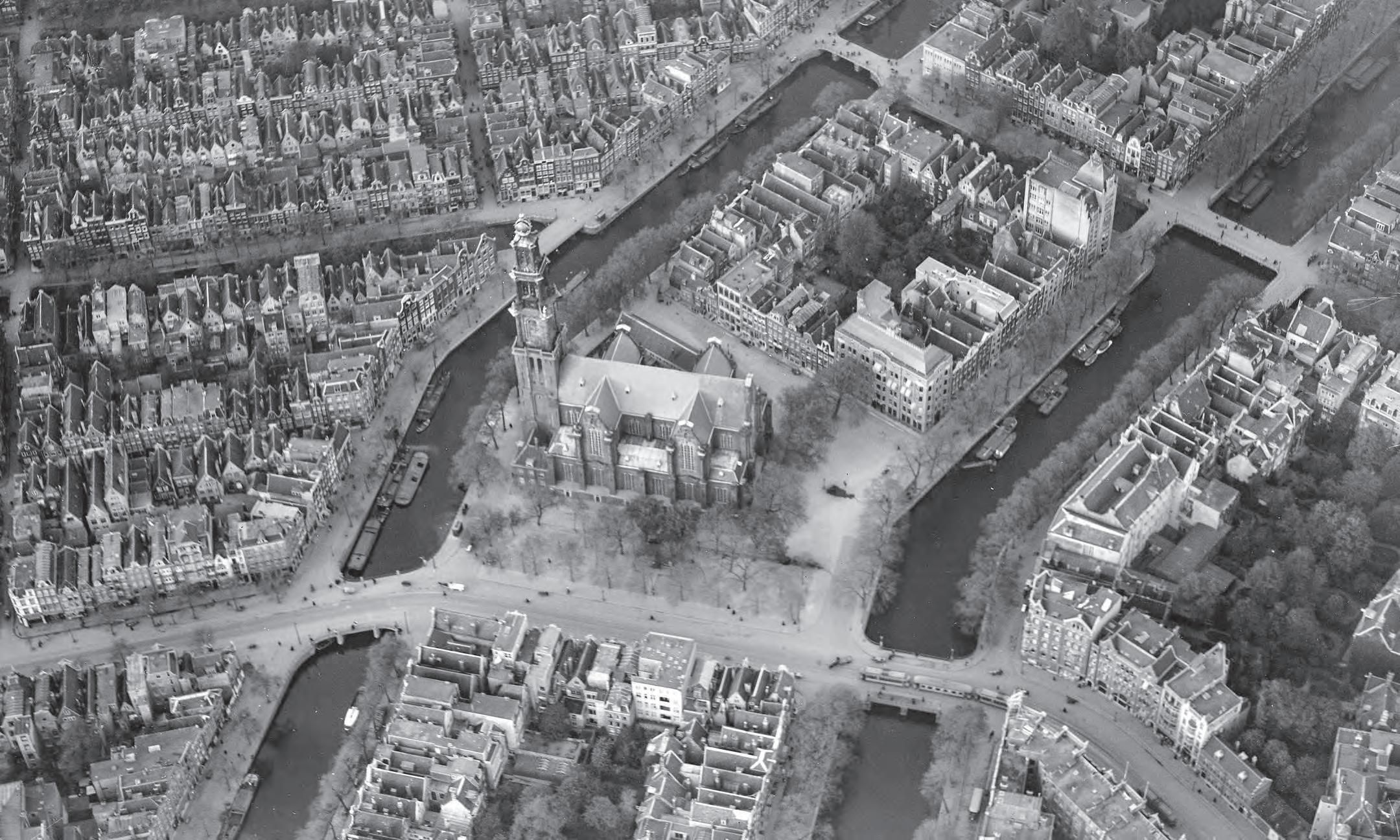




b. October 12, 1922 - Amsterdam, Netherlands
Holocaust Gallery Walk Program
Viewbank College
P72




May 1942 - Joe’s father was arrested and his brother taken away, leaving him alone in the flat for weeks. Rationing the food and not setting foot outside kept him barely alive. He then later fled up north and sought much needed refuge with some local farmers. In this remote farm he stayed for the rest of the war the until liberation in 1942.



In his early years, Joseph went to school and later qualified to become a lawyer.












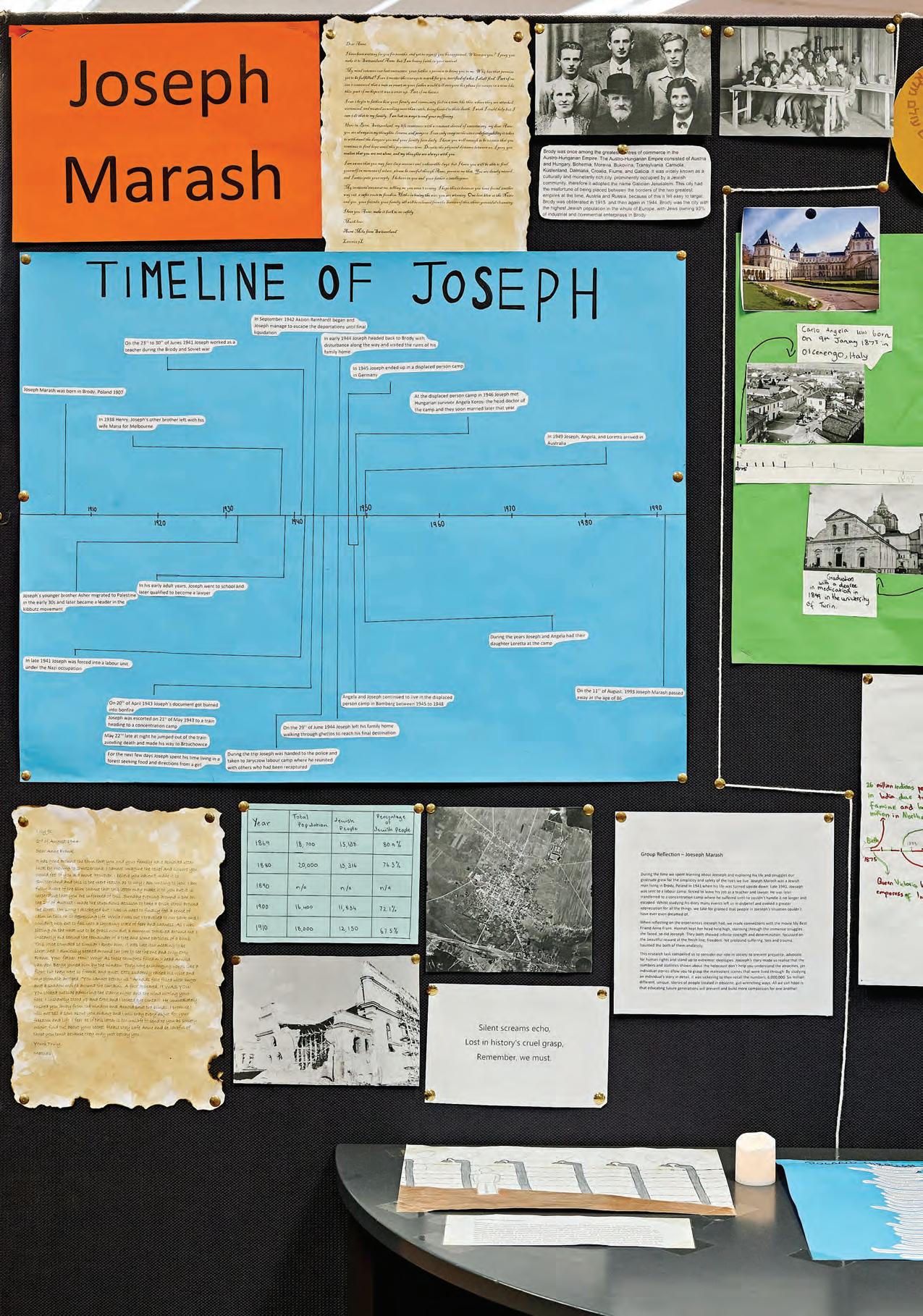


Holocaust Gallery Walk Program







February 20, 1929- Free State of Danzig (now Gdansk) Poland.



1939 - During German attacks on Bialystok, the family reunites and attempts to escape east in a covered horse-drawn cart. They face constant danger from German dive bombers the whole way.










Kitia famously debated a Holocaust denier on TV which was later used in the 2016 biographical film ‘Denial.’



b. March 1, 1922 - Bedzin, Poland
Holocaust Gallery Walk Program
Viewbank College
P80

In June 1944 Kitia was transported to the Ravensbrük Concentration Camp in northern Germany. Kitia described it as ‘sheer hell.’ It was freezing cold there was little food and prisoners worked outside in a quarry.












b. June 28, 1929 - Amersfoort, Netherlands Holocaust Gallery Walk Program








In December 1943, Louis was sent to the home of Dirk and Ann Onderweegs, who were active members of the Dutch Underground, in Lemmer. For safety reasons, Louis was given a new name; Leo Lemsra and false documents were created to support his new identity. Louis helped the Onderweegs in their work with the underground by forging and delivering documents and stealing official stamps from Nazi headquarters in town.
United States Holocaust Memorial Museum




b. 1906, Hungary





I have managed to secure a place in Maria Anker’s house. She is a kind Christian woman who has saved me and my family from the oncoming slaughter. When she brought us in she gave us food, blankets and a room to sleep in. Due to her constantly renting out parts of her house, us being here doesn’t make











Maria was only a few days old when the Germans invaded Soviet-occupied Poland. Her father was killed shortly after the invasion and Maria and her mother, Bela, were forced into the Białystok ghetto.
Holocaust Gallery Walk Program
Viewbank College
P86
















Polish couple, Wacław and Lucyna Białowarczuk, took Maria in after finding her wandering the streets alone after she had become separated from her mother. They hid Maria in plain sight, teaching her prayers and taking her to church so that she could blend in as a Catholic. Maria began calling the Białowarczuks ‘Mom’ and ‘Dad.’
b. June 14, 1941 - Bialystok, Poland


This doll was owned by Mirka and sold in an auction after her death. The paint marks on her legs are believed to have been made by Mirka.

Holocaust Gallery Walk Program

b.18 March, 1928
Paris, France

b. 1926 - Rymanow, Poland








August 1942 - Moshe, along with other Jews, is sent to a labour camp before being transferred to the ghetto in neighbouring Rzeszow. His parents and sister were deported to the Belzec extermination camp where they died.












At the time Natalia was recognized by Yad Vashem as Rightoeus Among the Nations, she had been living in poverty and violence in St. Louis for 18 years. The Jewish Federation of St. Louis stepped in to provide her with financial assistance and medical care, as well as a furnished apartment at $1 for a 10-year lease in honor of her contributions. Natalia Abramowicz passed away June 26, 1979, at the age of 81.
St. Louis Kaplan Feldman Holocaust Museum
b. October 2, 1897 - Poland
Holocaust Gallery Walk Program
Viewbank College





























For two years, Dr Paul Valent and his parents lived as Christians in a Budapest apartment. He was never allowed out of the house as his parents were terrified to be found out as Jews by the Nazi government.









b.1 March, 1929 - Berlin, Germany
Pages from Peter’s wartime journal, showing the only photos he had of his parents.
United States Holocaust Memorial Museum


Leo C. - This project allowed me to learn a completely new topic in a way where I was learning with others. Through working in a group, I was able to learn from my team members and vice versa, and I was taught research and presentation skills along the way.
Brianna S. - When studying the lives of those more unfortunate than us it makes us reflect upon our own privileged lives. It was also important to gather the information of what is current in the media, learning about how there are people who deny the experiences of others is very insightful and allows us to value the knowledge more.
Tahlia S. - This project was a meaningful experience for me because it encouraged me to develop a deeper understanding of the true horrors that Jewish people endured and their journey towards liberty. By gaining a broader knowledge within this topic, my empathy towards the survivors and those whose lives were lost was strengthened. It was a chance to reflect and recognise how history can shape a future.
Jane H. - Completing ‘The One’ was a process that was simply inspiring. Every story had lessons full of tribulation, that these individuals overcame, exemplifying human hope and spirit in a multitude of ways.
Eleanor R. - I realised how horrible groups can become when in search of something so great it took hold of so many lives.
Holocaust Gallery Walk Program
Viewbank College
P98
Cooper R. - This was a very important project because of the subject alone.
Jacob H. - It was interesting to work in a group. I really enjoyed learning about a singular person’s time in the Holocaust rather than the general overview that is publicly talked about.
Freddy D. - It is a serious topic and it was very interesting to learn about what happened during those times.
Eugene L. - This project was quite meaningful because I got to learn the history of the Holocaust.
Jacob G. - Presenting our project and survivor to others in a gallery walk was what was special about it.
Oscar S. - This project meant a lot to me since some of my ancestors were survivors. Being able to share information about one of the survivors and knowing what they went through was amazing.
Paul Y. - It was good to learn about and understand the severity of World War Two and the impact it had on people.
Danny C. - This project made me understand just how horrible the Holocaust was.
Josh S. - I had enjoyed learning about the Holocaust. I learned about when it happened and why it happened and how it impacted a lot of people.
Holocaust Gallery Walk Program Viewbank College















In 1947 Peter returned to Germany and began working as an intelligence officer interrogating former Nazi personnel.








b. August 23, 1927Preussisch Friedland, Germany (now Debrzno, Poland)
Holocaust Gallery Walk Program
Viewbank College P102

It took us three weeks to get to Santo Domingo. We spent most of our days being sick. When we arrived in Santo Domingo … we were very glad … [but] We didn’t know the language. We had no money. We had nothing. Just one suitcase for each of us. Ruth Arnoldi Kohn
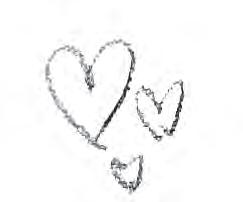






People used to say to my father, ‘Where is the Dominican Republic? Why would you want to go there?’ And my father said, ‘At this point I would go to I don’t care where it is. But at this point I would go to the moon because we have to get out of Germany.’
Ruth Arnoldi Kohn was one of 645 Jews admitted to the Dominican Republic from 1938 to 1945. Ruth, along with her parents and brother, were accepted to the Dominican Republic on the condition that they had the means to ‘contribute to the country’s enrichment.’ United States Holocaust Memorial Museum

b. April 26, 1930 - Mukačevo, Czechoslovakia


Nazi Germany dismantled Czechoslovakia. ‘That day my life began to change.’ Ruth and her family were forced from their home and into a ghetto.

















Holocaust Gallery Walk Program
Viewbank College
P106

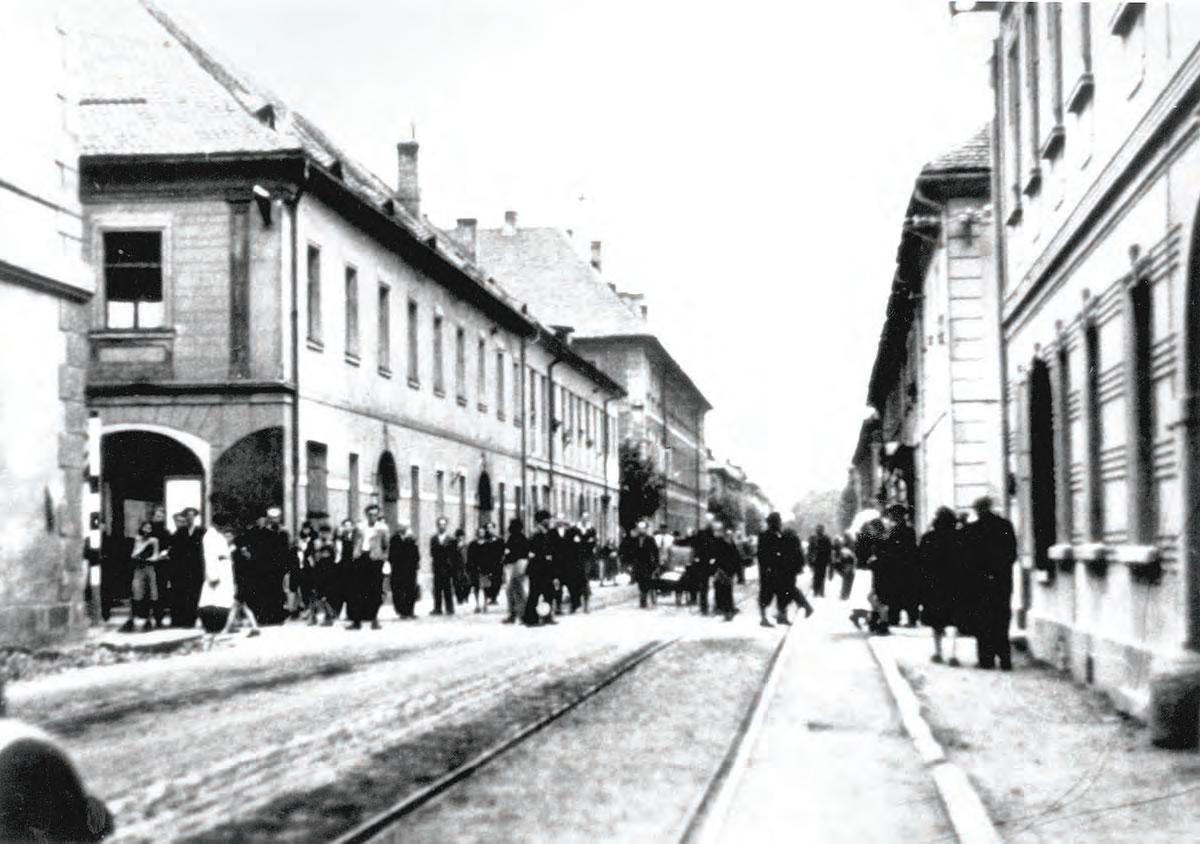





b. July 11, 1928 - Prague, Czechoslovakia

In March, 1943, the Adler family was deported to the Theresienstadt ghetto where Wolfgang (later to become Rabbi Sinai) worked in the bakery. He did it mostly to obtain bread for his sick parents. In May the Adlers were loaded onto a train of cattle-cars with 2,000 other people to be sent to Auschwitz-Birkenau.




b. Februray 2, 1924 Prague, Czechoslovakia


In Auschwitz there were many studies run by Josef Mengele. The main people he studied were twins, dwarfs and giants. These studies were not science based and were described as torture by a lot of survivors.





Viewbank College
P108



Holocaust Gallery Walk Program









Theresienstadt was a camp set up to act as propaganda for the Red Cross. It functioned as a model ghetto. It transported people to Auschwitz and Treblinka.


b. 6 June, 1931 - Subotica, Yugoslavia












b. May 27, 1929 - Bad Kreuznach, Germany
Holocaust Gallery Walk Program
Viewbank College
P112



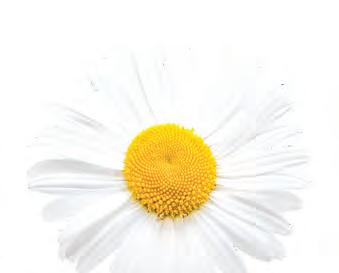


After Kristallnacht, Mr and Mrs Hilsenrath were determined to find a way to protect children. They used the family’s savings to pay a French woman to smuggle the children to France by train.











Holocaust Gallery Walk Program



In 1944, Tibi was deported to Auschwitz with his entire family. He then spent nine months at a labor camp in Silesia before being forced on a death march to Bergen-Belsen. Tibi was the only member of his family to survive. American Society for Yad Vashem

Nothing ever in literature could compare to what Bergen Belsen was.
Alice Lok

While at Gleiwitz, a labor camp that became part of the vast Auschwitz concentration camp network, Walek befriended Hinda Chilewicz, a fellow inmate.
In October 1945, after being liberated he reunited with Hinda in Weiden, Germany. They were married on March 2, 1947.
Holocaust Gallery Walk Program Viewbank College



b. February 1, 1923 -



























b. 1921 - Yugoslavia
Holocaust Gallery Walk Program
Viewbank College
P118




As Gracija’s family were being taken away, Gracija’s mother managed to whisper to Gracija’s work collegues (Zekira Besirevic and Roza Roza Sober) ‘They are upstairs’. The two young women ran upstairs to bring out Gracija and her uncle, Mordo Albahari, and take them to their home.

Tamika B. - From this task I learnt about the survivors of the Holocaust and the horrors they had to face. The gallery walk showed me that every survivor’s story is different and that they all lived through things we can only imagine. Working in a group allowed us to dig deeper into our ‘Ones’ life and allowed us to finish our gallery piece to a higher standard.
Emily R.- I really enjoyed this task, and I found it really interesting learning about the Holocaust, when reading about all the survivors it showed me that I am very lucky to live where I do and made me feel grateful for everything I have.
Riley A. - It meant a lot to me to honour these people and hear about their stories.
Pavle V. - It did not mean much to me at first as I never really knew much or had a family member involved but in the end it meant a lot through the people I met throughout the topic.
Emme B. - This project was one of my favourite tasks from English, as I was able to learn about history, which interests me, and we were able to be creative.
Gabrielle S. - I believe this project really gave students an opportunity to study and do a project in a more realistic manner.
Cameron M. - I enjoyed learning about history and war and thought that it was a really interesting subject and task.
Holocaust Gallery Walk Program
Viewbank College
P120
Daniel R. - I really enjoyed working in a group with my friends and the creation of the gallery made me realise how much work we put into it and I think that others really enjoyed looking at our work and learning about the survivor.
Sophia S. - This project was really important to do because it gave insight into individuals who were affected by the Holocaust and how devastating the Holocaust was.
Faith C. - This project made me more understanding of every victim that had to go through the Holocaust, and that each person went through just as much pain as each other.
Connor B. - I learnt about what people had to go through during this time and their life stories, then through sharing these important stories with others.
Liam C. - I really enjoyed being able to commemorate the bravery of those lovely people.
A
its survivors and the themes of hope, remembrance and humanity in your school
Schools can create a lasting tribute that fosters remembrance and learning for future generations after a visit to the Melbourne Holocaust Museum. Such a tribute allows students to reflect on themes such as hope, humanity and survival while deepening their understanding of the Holocaust. Here are some ideas about how to organise it:
1 Visit the Melbourne Holocaust Museum with your school: https:// mhm.org.au/learning-programs/
2 Reflect and Discuss Hold a debrief session where students share their thoughts, emotions, and key takeaways from the visit. Identify powerful stories of resilience and hope.
3 Choose a Creative Format Decide on an artistic medium such as:
• Art Installations (murals, sculptures, displays)
Holocaust Gallery Walk Program
Viewbank College P122
• Music and Poetry (original compositions, readings)
• Film or Digital Media (short films, animations, presentations)
• Writing Projects (letters to survivors, personal reflections, essays)
4 Choose a Location
Select a suitable area within the school, such as a garden, hall, or courtyard, ensuring accessibility for students and visitors.
5 Plan and Organize Assign roles, set deadlines, and gather materials. Ensure historical accuracy and sensitivity.
6 Engage the School Community
Present the tribute at an assembly, art exhibit, or online platform. Invite parents, staff, and local Holocaust educators or survivors to participate.
7 Encourage Reflection and Discussion
After the tribute, facilitate conversations about its impact, the importance of remembrance, and how lessons from the Holocaust apply today.
8 Create a Lasting Legacy
Consider making the tribute a permanent part of the school, such as a mural, a digital archive, or an annual remembrance event.
By combining creativity with historical reflection, students can honour survivors and inspire others to remember.
This project was made possible because of the dedication, creativity and vision of many people. A heartfelt thanks to:
The talented students at Viewbank College whose commitment, creativity, and care have given voice to the memories of those who experienced the Holocaust, ensuring their stories live on.
Lisa-Marie Coghlan and Fiona Ellis, the incredible teachers from Viewbank College who participated in the Gandel Holocaust Studies Program for Australian Educators and came away inspired to create an experience that deeply resonated with students beyond the classroom.
Tracey Collie for seeing that the artwork created by the students would lend itself to a book to celebrate story and inspire others
Jacqui Klass and the team at artklass for their incredible creativity and keen eye in transforming this project into such a beautiful book.
Dean Schmideg for the beautiful photos.
Ariella Markman for project managing the production of the book.
Nicole Brittain and the Gandel Foundation for their ongoing support and goodwill. Your generosity and belief in this project have brought this book to life.
Holocaust Gallery Walk Program Viewbank College

Holocaust Gallery Walk Program
Viewbank College
